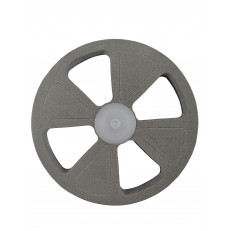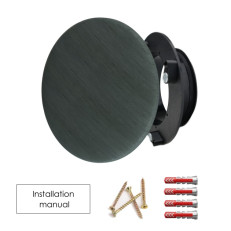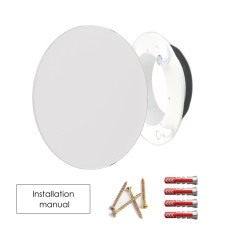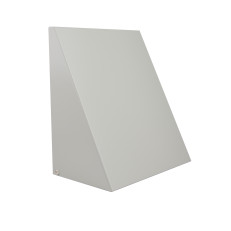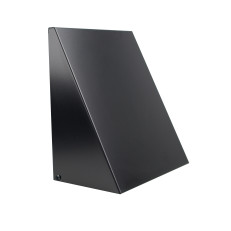Filters for recovery
WHY AIR FILTERS ARE IMPORTANT IN RECOVERY UNITS
A) PROTECTS OUR RESPIRATORY TRAYS
You can partially influence the quality of the air supplied by the type of filter you choose for the supply, in case of health problems (allergies, asthma, etc.) you simply let in as much clean air as you need for your lungs)
B) PROTECTS THE RECOVERY AND OTHER PARTS OF THE UNIT
A recuperation unit would hardly survive more than a few weeks without high-quality filtration, a clogged recuperator, damaged bearings, etc. are the result of careless maintenance of the filters in the recuperation unit.
C) PROTECTING THE CLEANLINESS OF THE SUPPLY PIPE
If you take good care of the filters, your unit is like a mirror, so you don't have to worry about the hygiene of the supply pipe either. You can therefore extend the cleaning interval of the supply pipe by up to several years.
Replacement of filters in residential recuperation units
All filters in the unit should be changed approximately every 2-6 months. The interval depends on the surrounding conditions. The unit should be in continuous operation. If there is no air exchange, microbes could grow on the surface of the filters. If the device is disconnected for a longer period of time, then the filters must be replaced. All types of units today have a function of signaling for the filter replacement interval.
Where to buy filters and how much do they cost?
We offer filters and filter fabrics for all ventilation units with heat recovery that we offer. Filter fabrics are suitable for filter boxes and air handling units. If you did not find the product you were looking for in our selection , we will be happy to price it for you individually.
Here, you can comfortably choose a suitable filter in our e-shop according to the type of unit or degree of filtration.
(https://www.luftuj.cz/filtry/)
What does the air filter in the recovery unit look like after a few months?


Filters of the recuperation unit for a family house after 2 months of operation - G4 and M5 inlet filter on the left, G4 exhaust filter on the top and a new clean set on the right for comparison.
Filtering classes or which filter to choose
| G3 + G4 | Effective against pollen and airborne dust - basic filtration - sufficient for the discharge filter (direction from the house in front of the recuperator) and often the supply filter if you are not allergic, asthmatic, etc. |
F5 +F6 newer designation M5 + M6 | Little effective against soot, oil mist and tobacco smoke and smoke from technological processes, partially effective against spores and bacteria. Filters are suitable for supply air (often as a second filtration after G3 or G4). Filters can be in the form of fabric. |
| F7 | Effective against bacteria, spores, partially effective against soot, oil mist, tobacco smoke, technology smoke. operations. Filters suitable for supply air (often as a second filtration after G3 or G4). Filters are not usually produced in the form of fabric, most often they are also frames. Ideally fitted as pocket or folded. |
| F8+ F9 | Very effective against soot, oil mist, tobacco smoke, smoke from technological processes, bacteria. In the residential sector (recovery units for family houses, etc.) these filters are not normally used. |
In general, we recommend G4 filters for both inlet and outlet. If you are allergic or asthmatic, we recommend increasing the filtration by another level, most often F5 (M5) or F7. If the unit does not allow for double filtration, it is possible to place a special filter box in front, where we place the G4 filter and insert the finer filter into the unit.
If you also struggle with odors, you can also use a carbon filter , which may or may not help depending on the type of pollution.
The filters in your unit may have older designations, so here we present comparison tables for better clarity:
Comparison table of filtration classes according to different standards:

Source: http://www.elektrodesign.cz/web/cs/web/ke-stazeni/teorie-vztahy-vzorce
New standard:

Smog situation and flying dust?
Dust is created all the time. It occurs in the interior, but above all in the exterior. Dust particles settle in our respiratory tracts throughout our lives. Particles smaller than 10 µm (PM10) can settle in the bronchi and cause serious health problems. In addition, the particles often contain adsorbed carcinogenic compounds. Inhalation of PM10 mainly damages the cardiovascular and pulmonary systems. Long-term exposure reduces life expectancy and increases infant mortality. It can cause chronic bronchitis and chronic lung diseases. Pollution by dust particles is currently one of the main air quality problems in the Czech Republic, and the government has recently responded to this with a stricter regulation that, for example, restricts the entry of cars into cities.
As part of the Clear Air For Europe project, the Netherlands Environmental Assessment Agency conducted research in 30 large European cities. In terms of air pollution with dust, she evaluated it as the worst situation in Prague. Ostrava and Karvina are other areas where limit concentrations are often exceeded...
At the same time, PM10 dust particles are captured by even the most basic filters (G4), at least these filters are now included in all ventilation units with heat recovery!
Last edit: 10/03/2019

